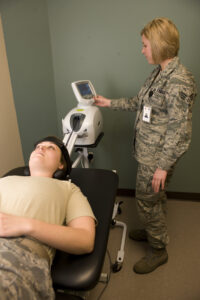INTRODUCTION
The relationship between the patient and personnel providing nursing care can be an important factor in the patient’s recovery.

The nursing staff must have the knowledge and skills required to meet the physical and emotional needs of the patient. The patient should be able to place his trust in the nursing staff, confident that well-trained, responsible individuals are assisting him and are interested in his well-being and return to good health and independence.
The patient should not be thought of as the condition that brought him to the hospital. Health care providers should never refer to a patient as “the fractured hip” or “the ruptured disk.” A comment of this type is very impersonal and may give a negative impression of the staff if overheard by the patient or by a family member. Because nursing paraprofessionals have close, bedside contact with the patient, they are often first to observe a complication in his condition. Their bedside presence should create a therapeutic environment.
To foster this environment, the nursing paraprofessional should do the following:
- Assess the patient’s ability to express himself.
- Assess the patient’s ability to cope with his condition.
- Assess the patient’s level of understanding about his condition and the teaching provided by the health care professionals.
- Assist the patient in establishing a trusting relationship with the health care providers.
- Utilize the nursing process to provide the best possible care.
- Sustain and enhance his own professional knowledge and skills through continuing education and training. The purpose of this subcourse is to enhance your knowledge of medical-surgical nursing care related to the musculoskeletal system and the role of the nursing paraprofessional in providing that care.
Subcourse Components: This subcourse consists of one lesson and one appendix.
Lesson 1. Nursing Care Related to the Musculoskeletal System.
Appendix: Universal Body Substance Precautions.
Study Suggestions: Here are some suggestions that may be helpful to you in completing this subcourse:
–Read and study each lesson carefully.
–Complete the subcourse lesson by lesson. After completing each lesson, work the exercise at the end of the lesson, marking your answers in this booklet.
–After completing each set of lesson exercises, compare your answers with those on the solution sheet that follows the exercise. If you have answered an exercise incorrectly, check the reference cited after the answer on the solution sheet to determine why your response was not the correct one.
Students who desire credit hours for this correspondence subcourse must meet eligibility requirements and must enroll through the Nonresident Instruction Branch of the U.S. Army Medical Department Center and School (AMEDDC&S).
